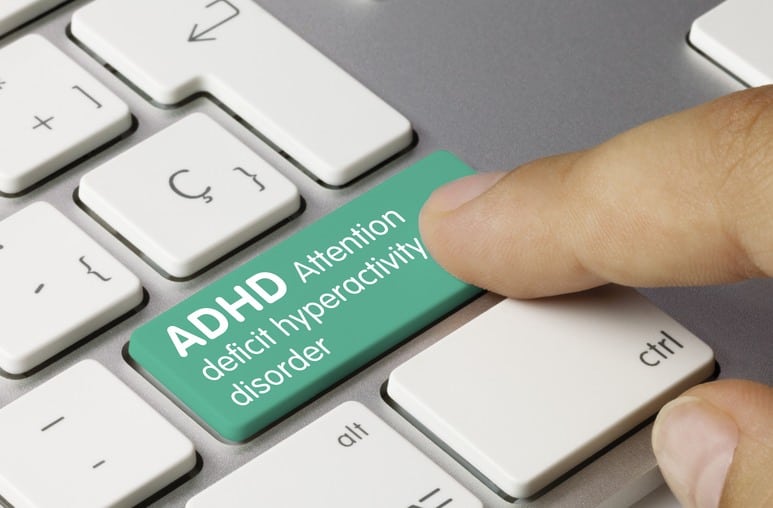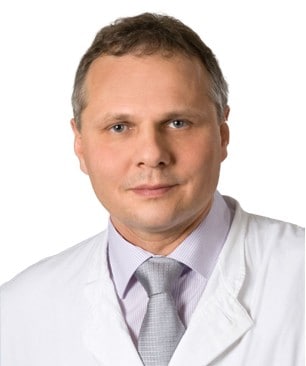ADHD. Introduction

Attention Deficit Hyperactivity Disorder (ADHD) is a developmental disorder. People with ADHD display symptoms of inattentiveness, over-activity, impulsivity, or combination of both. These symptoms start before age seven. ADHD can continue through adolescence and adulthood.
The original concept of ADHD (Attention Deficit Hyperactivity Disorder) understood the condition as a childhood developmental disorder. For this reason, scientists believed that ADHD was “outgrown” during the later stages of life.
First later research proved that ADHD symptoms last lifelong. Based on this finding Adults-ADHD has been recognized as a psychiatric diagnosis including the development of treatment protocols.
Adult ADHD. Change of paradigm
Initially the ADHD diagnosis was restricted only to children and adolescents younger than eighteen. First in the past twenty years genetic, neuroimaging, and psychological studies have demonstrated that ADHD symptoms persist life-long. In addition to that the researchers found that ADHD in adulthood impairs individual’s neurocognitive functions not less than in the childhood leading to professional and social difficulties.
ADHD, Signs and Symptoms
Many untreated ADHD patients have histories of negative academic and professional performance which could be falsely attributed to their low intelligence. However, the scientific data proved that people with ADHD are smarter than average.
ADHD symptoms include difficulty staying focused and paying attention, difficulty controlling behaviour, hyperactivity (over-activity) and impulsivity. It is hard to draw the line between normal and hyperactive behaviour and to identify a clinically significant level requiring intervention. ADHD can be misdiagnosed due to the fact that other mental health conditions can cause symptoms similar to ADHD. Therefore, it’s important to secure the diagnosis by an experienced psychiatrist who identifies whether a patient has ADHD, or psychiatric disorder with similar symptoms.
Diagnosis of Attention Deficit Hyperactivity Disorder
The diagnosis for ADHD is based on the DSM-5 defining the disorder as a persistent pattern of inattention and/or hyperactivity-impulsivity that interferes with functioning or development. ADHD diagnosis requires a partnership between the physician/psychologist, parents or caregivers, and the child.
ADHD diagnosis in adults has the following five or more symptoms of inattention and/or 5 or more symptoms of hyperactivity/impulsivity. They must have persisted for more than 6 months.
– Several symptoms (inattentive or hyperactive/impulsive) were present before the age of 12 years.
– Several symptoms (inattentive or hyperactive/impulsive) must be present in 2 or more settings (eg, at home, school, or work; with friends or relatives; in other activities).
– Clear evidence that the symptoms reduce the quality of social, academic, or occupational functioning.
– Symptoms do not occur exclusively during other mental disorder.
– Several inattentive or hyperactive-impulsive symptoms present prior to age 12 years.
– Several inattentive or hyperactive-impulsive symptoms present in two or more settings (e.g. at home, in the school or with friends).
– Clear evidence that the symptoms reduce the quality of, social, academic or occupational functioning
– Symptoms do not occur exclusively during the course
The severity of ADHD should be specified
Mild – few, if any, symptoms in excess of those required to make the diagnosis are present. The symptoms result in no more than minor impairments in social or occupational functioning.
Moderate – symptoms or functional impairment between ‘mild’ and ‘severe’ are present.
Severe – many symptoms in excess of those required to make the diagnosis, or several symptoms that are particularly severe.
The frequency of the adulthood ADHD in the mature population
The estimated global prevalence of ADHD is 4% to 6%. Despite the evidence that ADHD symptoms continue lifelong, until today very few adults receive adequate treatment. One study conducted in the United States estimated that only 10% of adults suffering from ADHD received treatment. This means that up to nine million adult Americans remain untreated.
Diagnostic problems in Adults-ADHD
In adults ADHD the signs and symptoms may differ from those during childhood due to the adaptive processes and avoidance mechanisms learned during the process of socialization. Many adults with ADHD are even not aware that they have the condition. An in-depth clinical interview of such individuals will uncover history of failure at school, problems at work, failed relationships, or multiple traffic accidents.
Misdiagnosing ADHD with other condition
Another barrier to the diagnosis of ADHD in adulthood is the blurring of the boundaries between ADHD and other psychiatric disorders. Mood and anxiety disorders are often misdiagnosed as ADHD.
Adults-ADHD and psychiatric co-morbidities
People with Attention Deficit Hyperactivity Disorder often have other overlapping mental conditions called “comorbidities”. Consequently, a thorough clinical examination is required to confirm the diagnosis of ADHD, differentiating it from other psychiatric disorders. Moreover, the presence of overlapping comorbidities, such as depression or anxiety, can further impair the performance of individuals affected by ADHD.
Clinical investigation of Adults-ADHD
Diagnosis of ADHD in adults based on testing alone is not sufficient. The clinical investigation can detect the causes restricting the person’s limitation. Is it a mental health disorder that impairs functioning, or is it ADHD, or a combination of both? ADHD test results in patients with depression, anxiety, bipolar disorder, will default to false-positive results for ADHD.
Psychometric tests for Adults-ADHD
Professional psychometric testing for ADHD is an additional useful tool that can be performed after other psychiatric disorders have been ruled out. Neuropsychological tests show differences between groups of adults with and without ADHD. The tests measure the executive function, memory, processing speed, and concentration. The psychometric testing cannot be used as a single tool to secure the ADHD diagnosis, but it is a valuable tool for quantifying the degree of disability.
CHMC patients are offered the psychometric test, Wechsler Adult Intelligence Scale – Fourth Edition (WAIS-IV). It is a professional, evidence-based, and practical test. The test measures not only general intelligence, but also intellectual deficiencies spotting the ADHD symptoms in adults.
Treatment for Adults-ADHD
Patients usually come to us because they have difficulties completing tasks, missing deadlines, or underperforming professionally. A proper diagnosis of ADHD requires a detailed investigation that includes the patient’s medical history, mental health assessment, and level of functioning.
The entire process of ADHD treatment usually involves combination of medications, psychotherapy, behaviour modifications and lifestyle changes. Multiple studies proved that the best ADHD treatment results are achieved using combination of medication and psychotherapy.
After confirming the diagnosis, the psychiatrist prescribes medications that are tailored to the adult ADHD symptoms. Depending on the disorder, treatments should be performed in the correct order. For instance, if a patient suffers of both depression and ADHD, depression should be treated before ADHD.
ADHD medication
The medication is one of the main pillars for the ADHD treatment. The medication for ADHD is prescribed by psychiatrists under conditions of strict documentation and close patient monitoring. Medication called “stimulants” is the first-line pharmacological treatment for ADHD. In the UAE just like in other countries stimulants have the status of “narcotic medication”.
It may seem unusual to treat hyperactivity with stimulating medication. However, this medication has actually a calming effect on ADHD patients.
To reduce the risk of habit-forming behaviour, the medication of choice should be a slow-release stimulant approved for ADHD in adults. In patients with symptoms of depression that are not comorbid with anxiety, alternative treatment approaches can be considered such use of dopaminerg antidepressant addressing both depression and ADHD.
The discussion of attention deficit hyperactivity disorder diagnosis and treatment would not be complete without a few words on the role of a psychologist.
Psychotherapy for ADHD
Various forms of psychotherapy are used to treat ADHD. The most effective evidenced based method is behavioral therapy. It focuses on patient’s behaviour to improve concentration and to reduce the hyperactivity.
Behavioural therapy includes practical help by organizing tasks or dealing with emotionally challenging events working through positive reinforcement for desired behaviours. It helps to control the anger trough thinking before acting. It helps the patient and his family to understand and to gain control of the stressful feelings related to ADHD.
Our psychologists are using customer focused, evidence-based therapeutic methods, including the mentioned CBT as well as mindfulness and Life-Skills training.
Adults-ADHD summary
ADHD in adulthood is a common disorder recognized as a psychiatric diagnosis. Adulthood ADHD symptoms cause significant neurocognitive deficits associated with academic, social, and occupational difficulties limiting patient’s ability to reach the full potential.
Despite considerable scientific progress in field of Adult ADHD most adults suffering of the condition remain undiagnosed and untreated.
A detailed examination supported by psychometric tests secures the diagnosis of ADHD in adulthood. As the adult ADHD began in childhood the diagnostic requires careful evaluation of past social and academic performance.
The most effective treatment for adult ADHD is the combination of pharmacotherapy (medication) and psychotherapy. Our psychologists are using customer focused, evidence-based therapeutic methods, including CBT as well as mindfulness and Life-Skills training.
The use of stimulating medication such as Aderal or Ritalin requires meticulous documentation of the prescribed dosage. ADHD patients respond “paradoxically” to stimulating medication, which in their case has calming and focus increasing effect. That’s why the risk of dependency in accurately diagnosed ADHD patient using the stimulants is negligible.
The side effects of medication used for ADHD treatment, such as Atomoxetine or stimulants can be avoided by careful titration of the dosage. Regular laboratory and ECG checks eliminate the possibility of adverse effects. If these criteria are met, the benefits of treatment far outweigh the possible risks.
Read more about ADHD

DR. GREGOR KOWAL
Senior Consultant in Psychiatry,
Psychotherapy And Family Medicine
(German Board)
Call +971 4 457 4240
References
Kooij JJ, Bijlenga D, Salerno L, Jaeschke R, Bitter I, Balázs J, et al. (February 2019). “Updated European Consensus Statement on diagnosis and treatment of adult ADHD”. European Psychiatry. 56: 14–34
Seidman LJ, Valera EM, Bush G (June 2004). “Brain function and structure in adults with attention-deficit/hyperactivity disorder”. The Psychiatric Clinics of North America. 27 (2): 323–347
CDC (2019-10-08). “Treatment of ADHD”. Centers for Disease Control and Prevention. Retrieved 2019-11-20
Kooij JJ, Bijlenga D, Salerno L, Jaeschke R, Bitter I, Balázs J, et al. (February 2019). “Updated European Consensus Statement on diagnosis and treatment of adult ADHD”. European Psychiatry. 56: 14–34
Stanford C, Tannock R (29 February 2012). Behavioral Neurobiology of Attention Deficit Hyperactivity Disorder and Its Treatment. Springer. pp. 10-. ISBN 978-3-642-24611-1
Katragadda S, Schubiner H (June 2007). “ADHD in children, adolescents, and adults”. Primary Care. 34 (2): 317–41
McKeague L, Hennessy E, O’Driscoll C, Heary C (June 2015). “Retrospective accounts of self-stigma experienced by young people with attention-deficit/hyperactivity disorder (ADHD) or depression”. Psychiatric Rehabilitation Journal. 38 (2): 158–163
Hodgkins P, Arnold LE, Shaw M, Caci H, Kahle J, Woods AG, Young S (18 January 2012). “A systematic review of global publication trends regarding long-term outcomes of ADHD”. Frontiers in Psychiatry
“Attention Deficit Hyperactivity Disorder: Diagnosis and Treatment in Children and Adolescents (A Systematic Review)”. Attention Deficit Hyperactivity Disorder: Diagnosis and Treatment in Children and Adolescents (A Systematic Review) | PCORI. 2021-08-27
Moffitt TE, Houts R, Asherson P, Belsky DW, Corcoran DL, Hammerle M, et al. (October 2015). “Is Adult ADHD a Childhood-Onset Neurodevelopmental Disorder? Evidence From a Four-Decade Longitudinal Cohort Study”. The American Journal of Psychiatry. 172 (10): 967–77
Godfrey J (March 2009). “Safety of therapeutic methylphenidate in adults: a systematic review of the evidence”. Journal of Psychopharmacology. 23 (2): 194–205
Rösler M, Casas M, Konofal E, Buitelaar J (August 2010). “Attention deficit hyperactivity disorder in adults”. The World Journal of Biological Psychiatry. 11 (5): 684–98.
Smith M (November 2017). “Hyperactive Around the World? The History of ADHD in Global Perspective”. Social History of Medicine. 30 (4): 767–787
